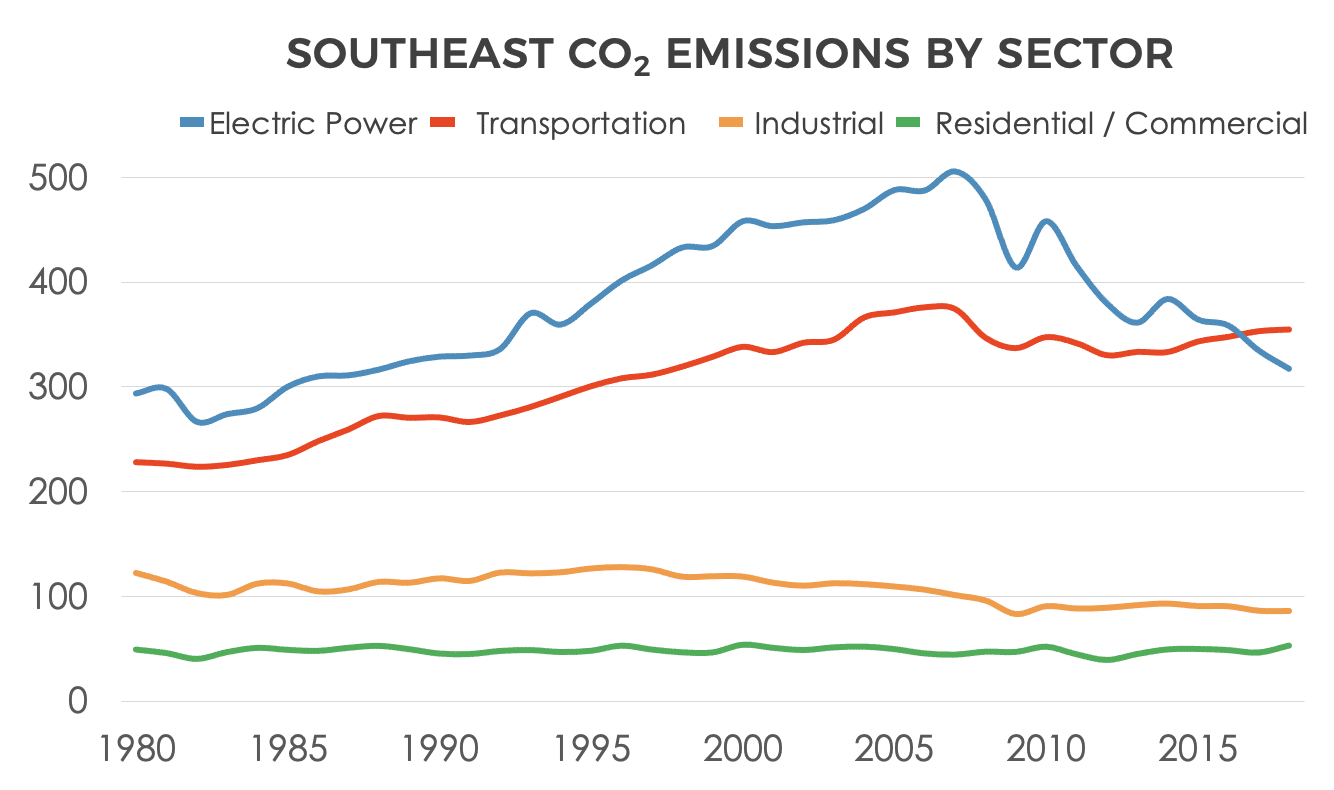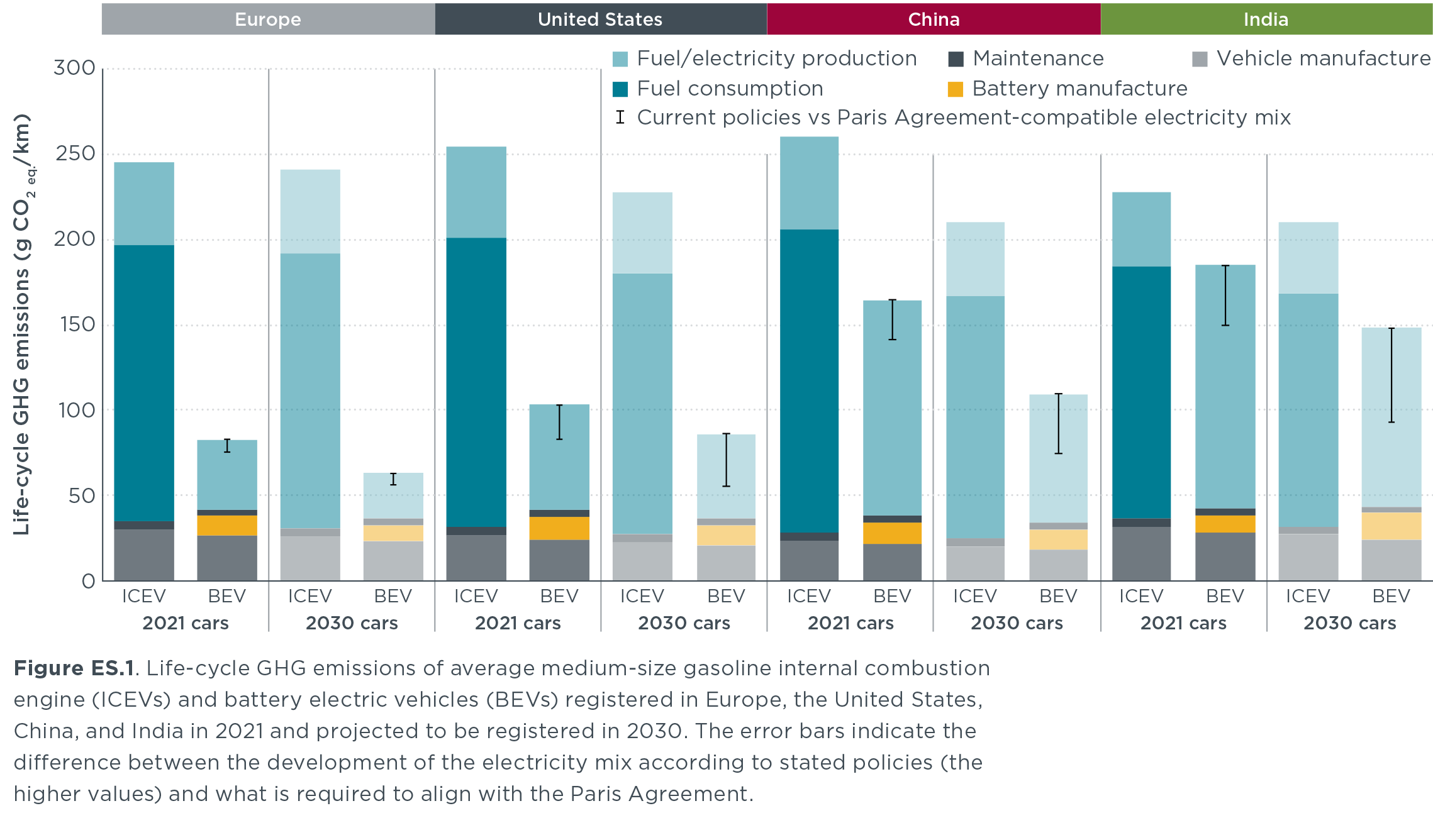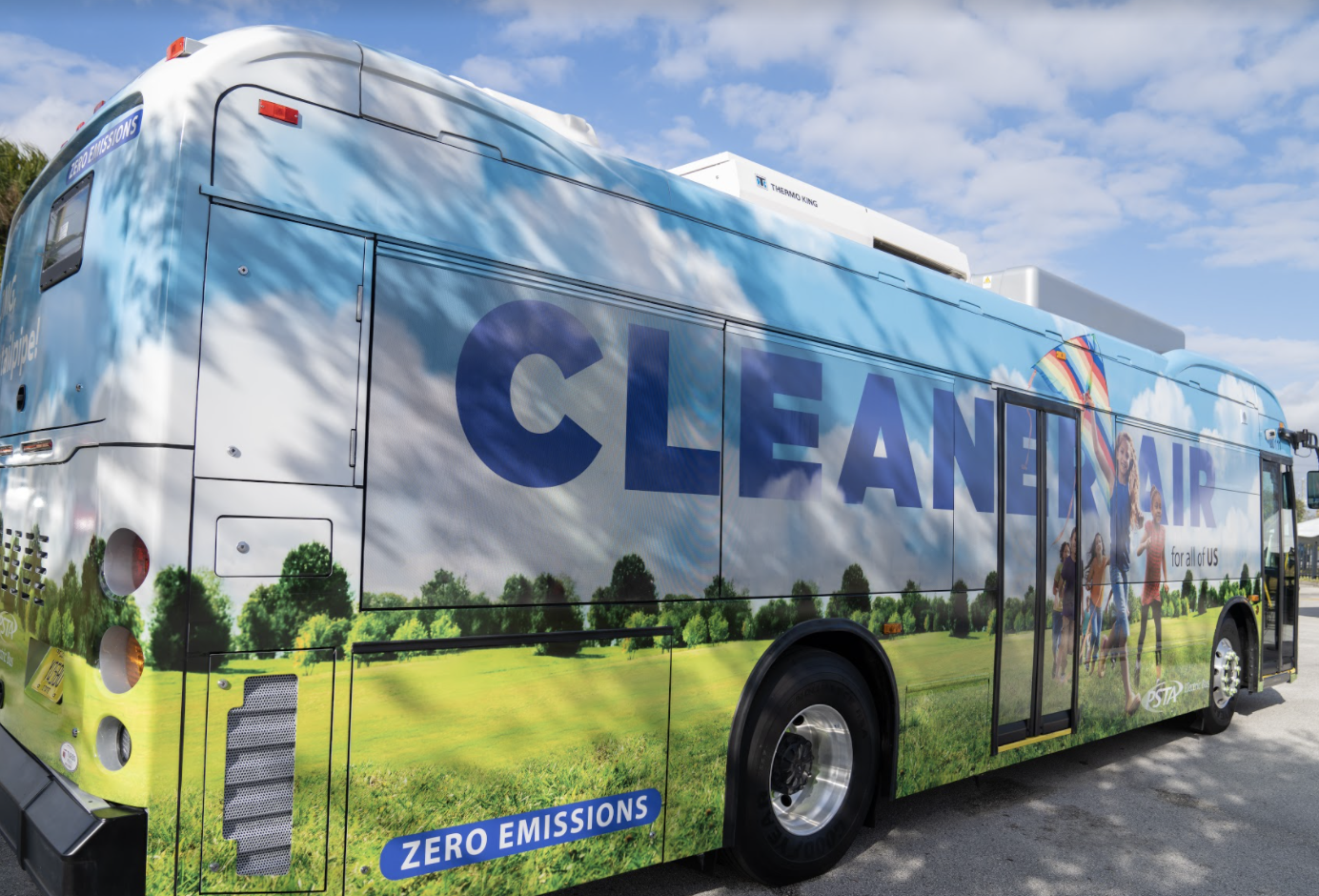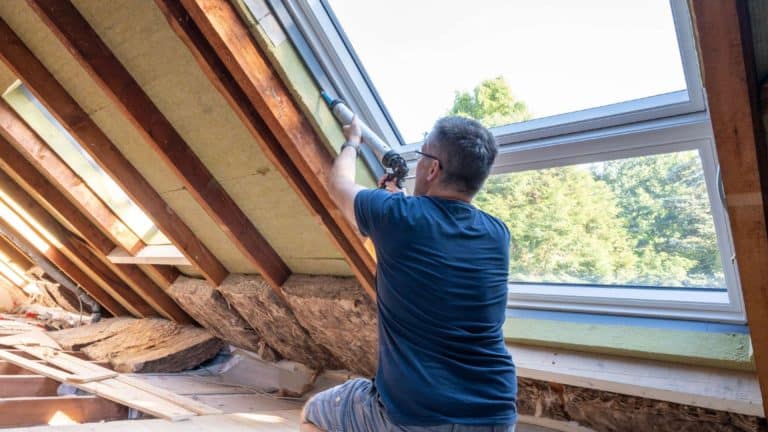This blog post was written by SACE’s former Electric Transportation Equity Manager, Patrick King.
The benefits of transportation electrification are many and far-reaching. In the Southeast, electrifying our transportation sector can vastly reduce emissions and offer massive economic opportunities. As shown in a recent report by the Southern Alliance for Clean Energy (SACE) and Atlas Public Policy, “Transportation Electrification in the Southeast,” our region is well-positioned to reap the economic rewards as we transition to electrification – from manufacturing investment to jobs, and more, not to mention the long list of environmental and public health benefits.
Still, to ensure that communities with the most to gain have access to public health and economic windfalls, we must make equity considerations, and make them early and often, as we go through this electrification transition.
Addressing the Impact of Air Pollution
Across America, the transportation sector is the leading source of greenhouse emissions and air pollution that harms public health, but the detrimental effects associated with air pollution are not distributed equally.

Redlining and residential segregation have resulted in many disadvantaged communities housing or being in close proximity to heavily trafficked corridors, fossil power plants, and industrial sites. This proximity, in turn, leads to heightened health impacts for these communities: a study released in 2015 found that air pollution was responsible for between 6-13% of area deaths in Minneapolis and St. Paul, Minnesota, but high poverty and communities of color were over-indexed in rates of respiratory hospitalizations representing 68% and 66%, respectively.
Transportation-related air pollution has a wide range of impacts on human health, such as increased cancer risk, lung and heart ailments, asthma, diabetes, and premature death. Furthermore, children, seniors, and those with existing respiratory issues are the most vulnerable to the adverse effects of air pollution. And a growing body of evidence shows that exposure to higher levels of air pollution during pregnancy and early childhood can result in adverse developmental outcomes in children. In addition to adverse physical health effects, these developmental outcomes can range from changes in brain structures to subclinical deficits in test scores and disorders such as ADHD and autism.
Transitioning to electric transportation offers a path to cleaner air for these communities and will save thousands of lives and billions of dollars in healthcare costs for Americans. But as we move forward and embrace this new clean technology, we must at the same time address our energy grid makeup and reduce our number of vehicle miles traveled (VMT) to maximize electrification’s public health and climate benefits. Our grid still relies primarily on fossil fuels for electricity generation, and the facilities that produce electricity are often located in or near these same disadvantaged communities, contributing to their already overburdened air pollution impacts. Combined with electrifying transportation, we must also reduce VMT to quickly cut emissions from the transportation sector. Policies that promote mass transit (electrified of course), alternate forms of mobility such as biking, and ride-sharing programs all contribute to reducing the number of vehicles on the road and can be more accessible to LMI/disadvantaged communities than car ownership.
Economic Burden and Opportunity
Existing structural inequities have also resulted in a lack of economic opportunity and a disproportionate burden on many in disadvantaged communities. The average U.S. household spends about 20% of its total income on transportation, making it the second-highest component of annual household spending. This cost varies geographically, but International Council on Clean Transportation (ICCT) analysis reveals that households earning less than $25,000 annually spend significantly more of their income – sometimes up to 50% – on vehicle ownership and operation. And while the overwhelming majority of low-income households, about 75%, do own or have access to a personal vehicle, more often than not, the vehicles that these households have access to are used, older, less fuel-efficient models that require more frequent maintenance, adding to their overall costs. In comparison, the average middle-income household spends about 16% of its annual income on owning and operating a personal vehicle.
Over the lifetime of a vehicle, EV ownership is more cost-effective than owning an internal combustion engine-powered (ICE) vehicle. Estimates find that savings from EV ownership could be as much as $10,000 over the vehicle’s lifetime due to their low maintenance and costs associated with charging, which is often cheaper than fossil fuel gas. These cost savings of transportation electrification could substantially benefit disadvantaged households.
Climate Exposure
Many of these same communities we’ve been discussing are often at a higher risk of the impacts of the climate crisis. Across the country, communities are already experiencing a higher frequency of stronger storms, more intense flooding, and more days of extreme heat, all of which are projected to worsen in the coming years. Climate change will affect us all, but those who live in disadvantaged communities are often impacted first and worst, and at the same time they often lack the necessary resources to prepare for and recover from severe weather events. Extreme heat is responsible for most weather-related deaths in the U.S. and is particularly deadly to the young and elderly with respiratory issues. And studies have shown lower-income and communities of color have higher rates of heat-related deaths and experience more significant damage from storms and floods than wealthier communities.

Recent reporting from the ICCT finds that in the U.S., an EV produces between 60-68% fewer emissions than a traditional ICE vehicle over its lifetime of use, even when taking into account the emissions associated with battery production and the reality that our energy grid still relies primarily on fossil fuels for electricity generation. Ongoing research into battery recycling aims to further reduce the carbon intensity of producing EV’s and our grid gets cleaner every day as more renewables come online.
Shrinking Cost Barriers to Increase Access
Even as the cost of purchasing an EV continues to drop, it is still out of reach for the overwhelming majority of low-income households. Until price parity reaches a level that makes large-scale EV ownership a reality for disadvantaged communities, utilities, state, and federal entities can employ other mechanisms to ensure these communities reap the benefits of transportation electrification.
State and local programs such as electric car-sharing and other forms of micro-mobility (e-bikes, scooters, etc.) provide access broadly, and at the same time can serve as educational tools. The Build Back Better Act, which Congress is poised to pass at the federal level, would be the most significant climate policy package in United States history, and contains several provisions that will help spur EV adoption, including multiple tax credits for purchasing new and used EV’s, grants for medium and heavy-duty EV’s, and other EV infrastructure incentives.
Fleet Electrification
In addition to personal EV ownership, public transit, school buses, freight, and delivery fleets provide immediate opportunities to improve air quality and reduce air pollution in overburdened communities through electrification. These medium and heavy-duty vehicles typically run on diesel, emitting more harmful particulate pollution than gasoline-powered vehicles. Pollution associated with diesel tends to be higher and more concentrated in urban areas. Therefore mitigating diesel pollution can have an increased and immediate impact, especially for low-income and communities of color who experience higher exposure rates.
A Just Opportunity That Should Be Seized
Transportation electrification offers a fast and safe way to fight climate change by vastly reducing carbon emissions and improving quality of life by reducing air pollution and creating economic opportunity. These windfalls would be most impactful and provide much-needed benefits to historically underserved communities, who suffer the brunt of historical pollution patterns. It is our responsibility as we influence this transition to consider equity components at every juncture in order to avoid mistakes and ensure the strongest most beneficial system in place in our electric transportation future.
*Transportation electrification offers a once-in-a-generation opportunity to not only address climate change by vastly reducing carbon emissions but, in doing so, serve as a means to disrupt systems of inequities. Prioritizing the needs of historically underserved communities in the transportation electrification movement ensures those who have the most to gain, reap its benefits while at the same time strengthening our society’s ability to mitigate the worst effects of the climate crisis.
Electrify the South is a Southern Alliance for Clean Energy program that leverages research, advocacy, and outreach to promote renewable energy and accelerate the equitable transition to electric transportation throughout the Southeast. Visit ElectrifytheSouth.org to learn more and connect with us.


